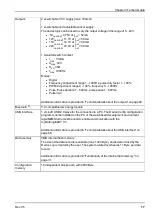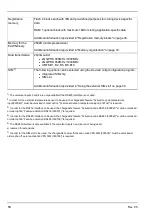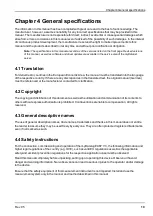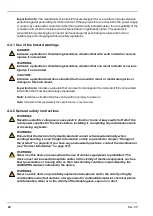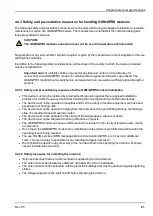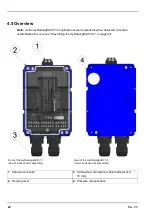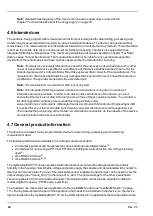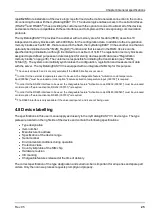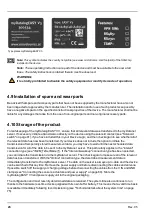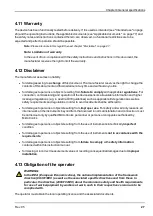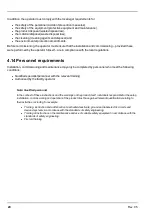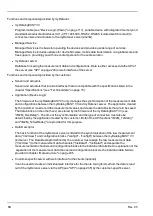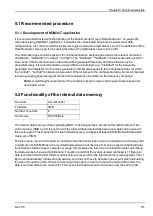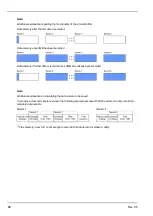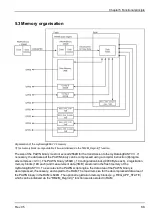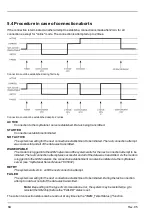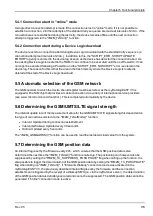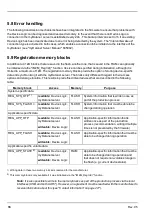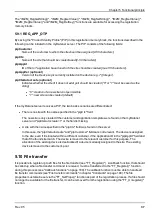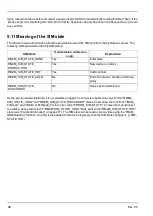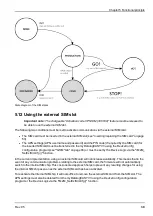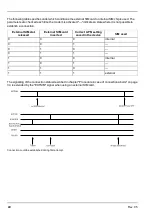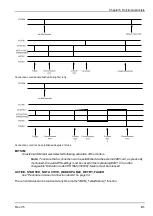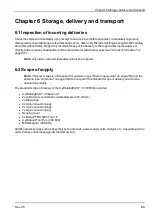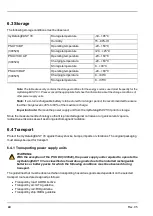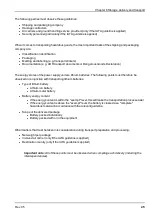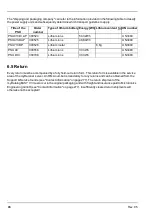
Chapter 5 Functional principle
5.1 Recommended procedure
5.1.1 Development of M2M/IoT application
It is recommended to start with the definition of the Data Descriptor (see "Data Descriptor " on page 235)
when developing a M2M/IoT application. It specifies the various data structures (measurement data,
configurations, etc.) that are valid for the Device Logic as well as the myDatanet server. The definitions of the
Data Descriptor also apply for accessing the data of the myDatanet server via the API.
The information type should be taken into consideration when assigning the data to the relevant containers
("histdata0" - "histdata9" or "config0" - "config9"). The "histdata0" - "histdata9" containers should be used for
time series. If there is measurement data that will be generated frequently and data that will only be
generated rarely, it is recommended to use two different containers (e.g. "histdata0" for the frequently
generated and "histdata1" for the rarely generated). Similar also applies to the configuration data, for which
the "config0" - "config9" containers are provided. When it comes to the configuration data, it is recommended
to take a grouping based on logical context into consideration in addition to the frequency of change.
Note:
A well thought out selection of the containers helps to reduce the required data volume and
associated costs.
5.2 Functionality of the internal data memory
Structure
Circular buffer
Total size
3MB
Number of sectors
8
Sector size
393.216 Byte
The internal data memory of the myDatalogEASY V3 is designed as a circular buffer with 8 sectors. If the
entire memory (3MB ) is full, the sector with the oldest data is deleted fully before new data can be saved in
this sector again. This means that the internal data memory comprises at least 2,625 MB of valid data and a
maximum of 3MB .
For this reason, it is recommended to coordinate the data transmission and record interval in such a way that
a maximum of 2,625 MB has to be recorded between two transmissions. If it can be expected that individual
transmissions fail due to poor network coverage, this must also be taken into consideration when calculating
the data volume to be saved. Additionally, it must be noted that the system-related overhead is 11 Byte per
data record and that the first 8 Byte of each sector are reserved for the internal memory management. The 11
Byte overhead already includes the timestamp, so it does not have to be taken into account when calculating
the size of the entire record. If there is not enough free space in a sector to save the entire data record, the
data record is written to the next sector. This means that a data record is not written over the sector limits.
Rev. 05
31
Summary of Contents for myDatalogEASY V3
Page 2: ......
Page 13: ...Chapter 2 Declaration of conformity Chapter 2 Declaration of conformity Rev 05 13 ...
Page 14: ......
Page 42: ......
Page 76: ......
Page 88: ......
Page 102: ......
Page 110: ......
Page 116: ......
Page 234: ......
Page 244: ......
Page 252: ......
Page 254: ......
Page 266: ......
Page 276: ......

